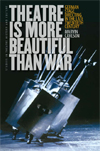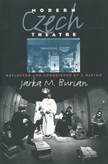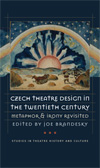Theatre Is More Beautiful Than War
“This is the most extensive and informative survey on contemporary German theatre available in English. It starts from the beginning of a new golden age of German theatre in the late 1960s and stretches until productions presented at the last Berlin Theatertreffen in 2008, thus covering three generations of leading stage directors. Lucidly analyzing a wealth of wisely selected productions, Marvin Carlson not only gives a highly illuminating account of the variety and innovativeness of German theatre in this period, he also highlights the enormous prestige and significance accorded to theatre as a unique inspirational form of self-reflection within German culture. An indispensable study for anyone interested in contemporary theatre and its relevance for recent theories.”—Erika Fischer-Lichte, author, The Show and the Gaze of Theatre: A European Perspective
In almost every area of production, German theatre of the past forty years has achieved a level of distinction unique in the international community. This flourishing theatrical culture has encouraged a large number of outstanding actors, directors, and designers as well as video and film artists. The dominant figure throughout these years, however, has remained the director. In this stimulating and informative book, noted theatre historian Marvin Carlson presents an in-depth study of the artistic careers, working methods, and most important productions of ten of the leading directors of this great period of German staging.
Beginning with the leaders of the new generation that emerged in the turbulent late 1960s—Peter Stein, Peter Zadek, and Claus Peymann, all still major figures today—Carlson continues with the generation that appeared in the 1980s, particularly after reunification—Frank Castorf, Anna Viebrock, Andrea Breth, and Christoph Marthaler—and concludes with the leading directors to emerge after the turn of the century, Stefan Pucher, Thomas Ostermeier, and Michael Thalheimer. He also provides information not readily available elsewhere in English on many of the leading actors and dramatists as well as the designers whose work, much of it for productions of these directors, has made this last half century a golden age of German scenic design.
During the late twentieth century, no country produced so many major theatre directors or placed them so high in national cultural esteem as Germany. Drawing on his years of regular visits to the Theatertreffen in Berlin and other German productions, Carlson will captivate students of theatre and modern German history and culture with his provocative, well-illustrated study of the most productive and innovative theatre tradition in Europe.






